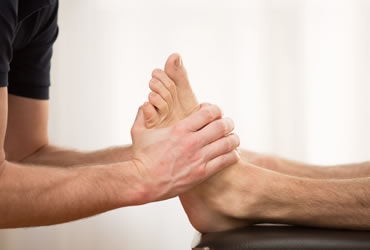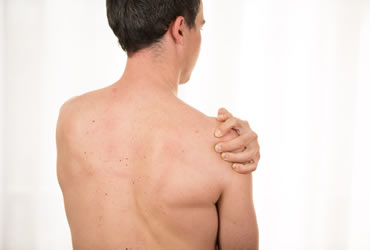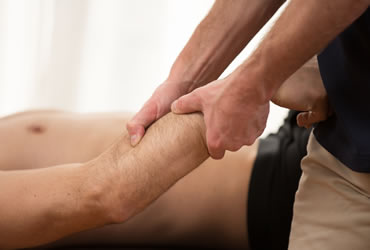The Fascial Distortion Model (FDM)
The Fascial Distortion Model (FDM)
FDM, the Fascial Distortion Model, was developed by the
doctor and Osteopath Dr. Stephen Typaldos, D.O.
The verbal and physical description of the patient, combined with the recognition of the mechanisms of the injury and the correct orthopedic tests, lead the therapist towards the effective treatment of soft tissue.
In the fascial distortion model, there are currently 6 main types of fascial distortions that work with TMT (Typaldos Manual Therapy). By this method, often, very fast and clear improvements in the pain and discomfort are achieved. Virtually all musculoskeletal injuries (from a jerk in a muscle to a frozen shoulder) can be included in one or more of the fascial distortions. Through this specific manipulative therapy, the following distortions / pathologies are corrected.



- "Triggerband" (TB):
Distorted fascia band. The most common of all is twisted or wrinkled fascial fibers that cause pain with a burning or pulling sensation along the path of the fascial band. Often, patients unconsciously make a movement with the hand that encompasses that path when they describe the pain.
- “Herniated Triggerpoint”:
Abnormal protrusion of a tissue through the fascial plane. It is rarely seen in the extremities. HTP is perceived as "spongy marbles," and they are the size of an almond or smaller fascial herniations.
- “Continuous Distortion” (DC):
Alteration of the transition zone between ligament, tendon or other fascia and bone. Imagine these distortions as tiny lesions of the bone-ligament transition zone. Patients point to the DC with their finger and complain of pain located at one point.
- “Folding Distortion” (FD):
Three-dimensional alteration of the fascial plane. These injuries are similar to what happens with a road map that is displayed and then folded back incorrectly. Folding distortions hurt at a deep level of the joint.
- “Cylinder Distortion” (CyD):
Superposition of the cylindrical spirals of the superficial fascias. Cylinder distortions cause deep pain in a non-articular area that cannot be reproduced or increased with palpation. A very typical symptom is night pain.
- “Fixing Planes” (TF):
Impaired sliding ability of fascia surfaces. When patients complain that the joint is stiff or they feel like it "lacks oil," they are describing a flat fixation. Flat fixings are fascial surfaces that have lost the ability to slide.
Further information: http://www.fdm-europe.com/en_US/

